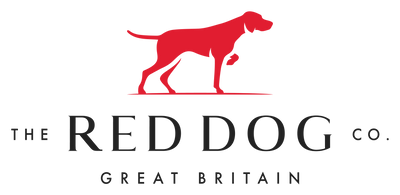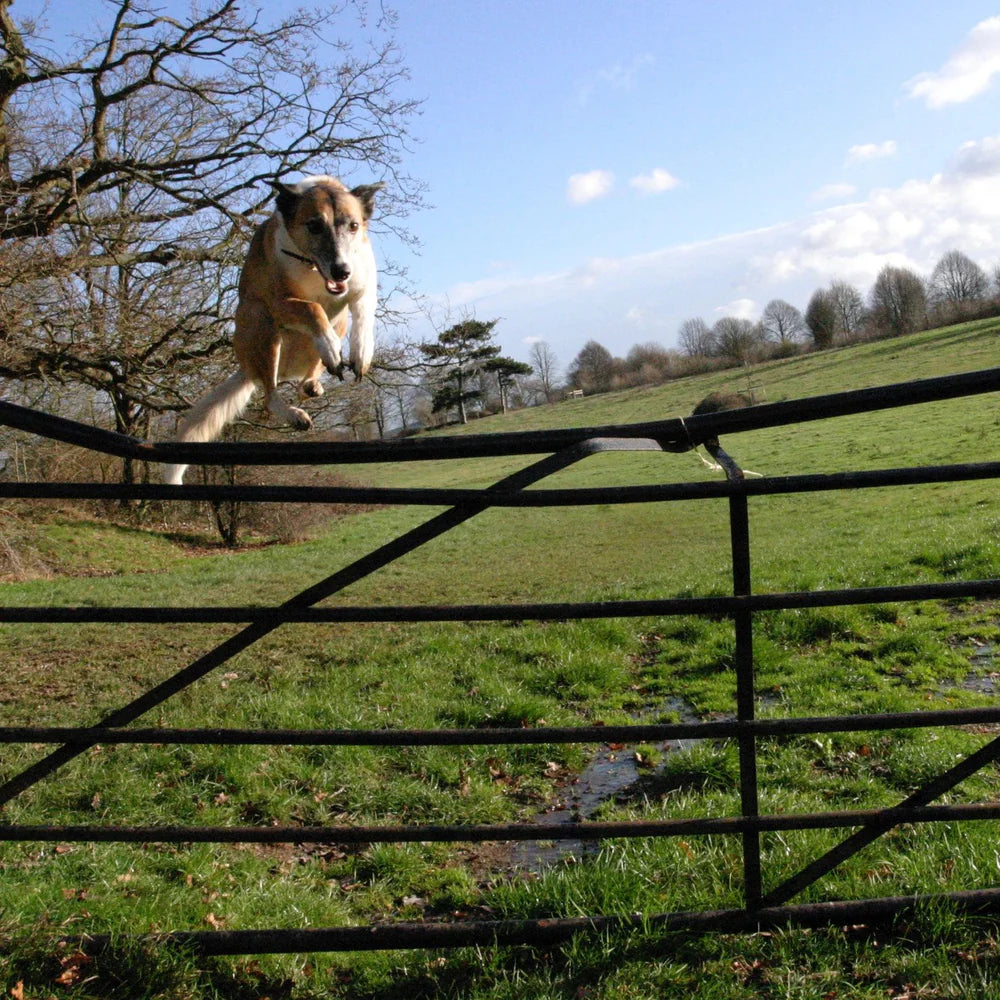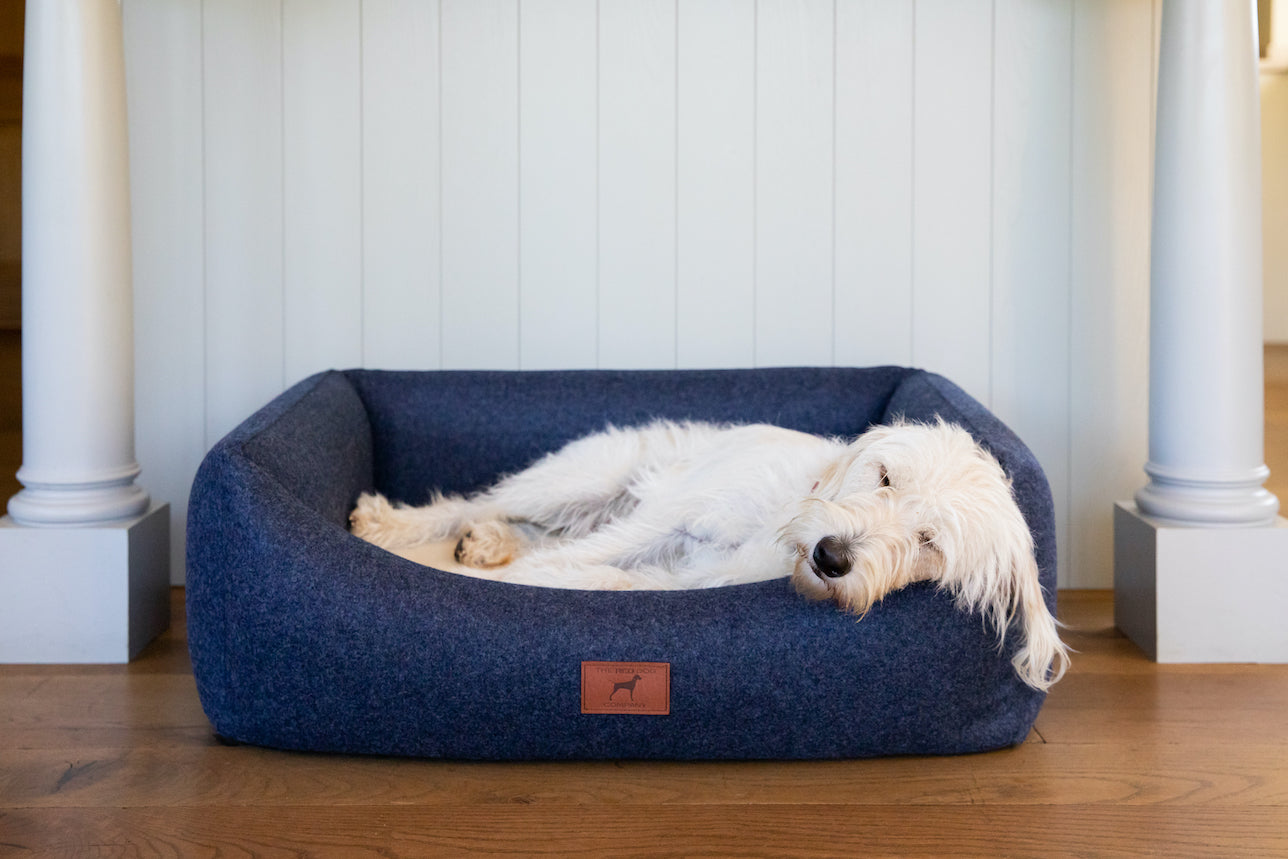Orthopaedic issues in dogs include any deformities, disorders and injuries of the skeleton and closely associated structures - such as tendons and ligaments.
These conditions are often associated with inflammation and pain, along with reduced function, which can significantly impact the dog’s wellbeing.
An orthopaedic concern is a common reason for a dog to be presented at the Veterinary Practice.
Some orthopaedic cases will be caused by trauma- which could affect any breed but other, non-traumatic conditions, are over-represented in certain breeds.
Unfortunately, there are some specific orthopaedic conditions that frequently affect our four-legged friends.
Here we look at the five most common canine orthopaedic issues: Arthritis, Hip and Elbow Dysplasia, Cranial Cruciate Disease, Patellar Luxation, and Inter Vertebral Disc Disease (IVDD).
Arthritis
Arthritis is a degenerative disease, affecting all structures within the joint and ultimately can lead to joint failure in dogs.
In this degenerative disease, worn cartilage is not replaced, leading to inflammation in the affected joint.
This inflammation results in restricted movement due to the thickening of fibrous tissues and new bone formation.
As well as, there is a reduction in cushioning from joint fluid, with reduced support from ligaments that causes the joint to become weaker and unstable.
One of the most common forms of arthritis in dogs is osteoarthritis, with some studies suggesting an incidence as high as 35% of all dogs and 80% of dogs over the age of 8 years.

In the early stages of arthritis, signs may be subtle. There may be intermittent changes in behaviour and demeanour as well as minor changes in gait.
Some owners will note their dog slowing up on walks, shifting their weight or have a reduced keenness to exercise and play.
There can be a reduced willingness to jump up into the car and episodes of stumbling.
Unfortunately, there is no cure for arthritis, but it is a condition that can be managed, to reduce pain and improve your dog’s quality of life.
Early intervention is key to success in managing arthritis such as making sure your dog is slim; given adequate pain relief and anti-inflammatory joint supplements; appropriate levels and type of exercise as well as a supportive orthopaedic dog bed.
Arthritis is often considered to be a disease of aged dogs, but Developmental Joint Disease (DJD) is a leading cause of arthritis and affects younger dogs with examples including Hip Dysplasia and Elbow Dysplasia.
Hip Dysplasia
Hip Dysplasia (HD) is a Developmental Joint Disease (DJD) that affects many breeds, with the medium and large breeds such as the Labrador Retriever, Golden Retriever, Rottweiler, German Shepherd and Newfoundland being more at risk.
Health schemes are in place to minimise the tendency towards DJDs in susceptible breeds. The inherited genes drive the formation of an imperfect joint, which is subject to additional stresses as the puppy grows.
This results in an early onset of degenerative change and subsequent arthritis. Environmental factors such as nutrition and inappropriate exercise can magnify this genetic predisposition.
As described above, the management of arthritis secondary to Hip Dysplasia, involves weight management, exercise modification and physiotherapy along with pain killers, anti-inflammatory medication and supplements and support through an appropriate bed.
In some specific cases of HD, surgery may be indicated in the puppy to modify the hip anatomy, or in the advanced case a total hip replacement may be considered.
Cranial Cruciate Disease (CCD)
The cranial cruciate ligament is a strong fibrous band of tissue found in dogs’ stifles (knees) which connects the lower part of the femur to the upper part of the tibia.
Along with other ligaments, the Cranial Cruciate plays an important role in stabilising the knee joint.
In contrast to the situation when humans rupture their cruciate ligament, the vast majority of cranial cruciate ruptures in dogs are the result of long-term degeneration with a weakening of the ligament over time.
Genetic factors, as well as some environmental factors, appear to play an important role.
Certain breeds are more prone to cruciate issues, these include:
- Rottweilers
- Golden Retrievers
- Boxers
- Staffordshire Bull Terriers
- Yorkshire Terriers
- West Highland White Terriers
Many dogs in susceptible lines will rupture the cruciate ligament in both of their knees, often at an early age. The incidence of CCL Disease across all breeds is estimated to be approximately 0.5-0.6%.
Hindlimb lameness is the most common sign of Cranial Cruciate Ligament (CCL) injury, often this can be sudden in onset during exercise, or it can be more chronic and progressive in some dogs.
Cranial Cruciate Ligament Disease is a common cause of arthritis in dogs and as described above, arthritis can cause significant pain and negatively impact a dog’s well-being.
Each case will be individually assessed but surgery is most often indicated for CCL injury, especially in dogs over 12-15Kg.
If conservative management is undertaken, weight management, an appropriate exercise program, physiotherapy, pain relief and anti-inflammatory medication and supplements will be beneficial.
With surgery, the aim is to stabilise the joint, minimise arthritic change and pain and improve function.
Surgery will either be to replace the ligament or to alter forces acting within the knee joint by cutting the tibia and so making the CCL redundant.
Patellar Luxation
The patella is a small bone within a tendon in the knee joint. The patellar tendon lies in a groove at the bottom of the femur and attaches below the knee onto the tibia.
In some dogs, the patella luxates (slips) out of its normal position in the groove, resulting in an inability to extend the knee joint.
Patellar Luxation causes a mechanical lameness that can be affected by varying degrees of arthritis caused by patella cartilage trauma when moving out of the groove.
With this mechanical lameness, dogs will present with a characteristic skipping gait, which often lasts a few steps before returning to a weight bearing gait. In more severe cases, your dog may have a persistent hind limb lameness and if both knees are affected, they will have a stiff gait.
It’s thought that Patellar Luxation affects approximately 1.3% of dogs.
It can affect dogs of all sizes but are much more prevalent in the small breeds including Pomeranians, Chihuahuas, Yorkshire Terriers and French Bulldogs.
With its largely genetic aetiology, most dogs will present as puppies or young adults.
There are 4 Grades of Patellar Luxation, often non-surgical management is employed for Grade 2 unless there is a persistent lameness but is considered for the higher grades.
Various surgical techniques are employed to restore normal alignment of the thigh muscle relative to the whole limb, including straightening the femur, deepening the groove that the patellar ligament sits in and reconstructing the soft tissues around the knee so they are neither over tight or loose.
Intervertebral Disc Disease (IVDD)
Intervertebral Disc Disease (IVDD) is the most common spinal disease in dogs.
Intervertebral discs are the shock absorbers that sit between dogs’ vertebrae, offering support and allowing the spine to move.
These discs can degenerate, leading to reduced shock absorbing capacity and can ultimately herniate and cause spinal cord compression- a ‘slipped disc’.
More than one type of disc disease is recognised:
Type I (Intervertebral Disc Disease)
Type I is most commonly seen in the chondrodystrophic dogs that characteristically have short limbs- such as the Dachshund, Basset Hound and French Bulldog.
Degenerative changes can start from an early age, so they may be young at the time of presentation.
Severity of clinical signs varies but often they’ll present with sudden onset back pain evidenced by the hunched posture, vocalisation, panting, shaking and unwillingness to move.
More severely affected dogs may have trouble walking or even be paralysed and with nerve dysfunction there could be loss of bladder control and even loss of pain sensation.
Type II (Intervertebral Disc Disease)
Type II more commonly affects the medium to large breed dogs and presentation is often a little later in onset, at circa 6 years old.
These dogs can present in acute pain but more often will have a slowly progressive pain with a reduced keenness to exercise, jump and climb stairs.
Treatment for IVDD will depend on the owner's circumstances and the severity of the dog’s symptoms.
In recurrent cases and if symptoms are severe at first presentation, surgery may be undertaken.
Conservative management aims to reduce pain and swelling around the spinal cord and gives the torn discs time to heal.
Some dogs treated this way will suffer with repeat disc herniation and may suffer with additional damage.
Managing Orthopaedic Issues in Dogs
Some of the best methods of treating and maintaining the common orthopaedic issues described above are:
- Maintaining your dog at ideal weight
- Reducing pain and inflammation with medication and supplements
- Providing a supportive comfortable place to sleep
- Following an appropriate exercise plan with additional therapies of hydrotherapy and physiotherapy if appropriate.
As described above, osteoarthritis is a painful, progressive and chronic disease that adversely affects many dogs in the UK.
Some of the common canine orthopaedic conditions described here will lead to arthritis and we need to be aware of the symptoms to recognise it and put a management plan in place.
Successful management aims to slow progression of disease, make our dogs as comfortable as possible and improve their quality of life.



